Matt Hancock’s use of figures on coronavirus testing has been branded “misleading” by the UK’s statistics watchdog, in a bruising assault on the trustworthiness of the numbers used to justify the relaxation of lockdown.
In a scathing letter to the health secretary, UK Statistics Authority chair Sir David Norgrove said that the government’s presentation of testing figures “falls well short” of normal standards.
And he warned: “The aim seems to be to show the largest possible number of tests, even at the expense of understanding.”
Download the new Independent Premium app
Sharing the full story, not just the headlines
The letter sparked accusations that ministers are “wilfully misleading the public” at the daily No 10 coronavirus briefing, where numbers of tests are routinely unveiled without any explanation of how many have actually been completed rather than simply sent out in the post and how many represent repeat tests on the same person.
In an unusually critical intervention, Sir David said that the figures used were “far from complete and comprehensible” and the way they were analysed and presented gave them “limited value” in helping the public and clinicians understand the progress of the outbreak.
It was “hard to believe” that the statistics used by Mr Hancock’s Department of Health helped support the testing programme and “not surprising” that they were “so widely criticised and often mistrusted”, said Sir David.
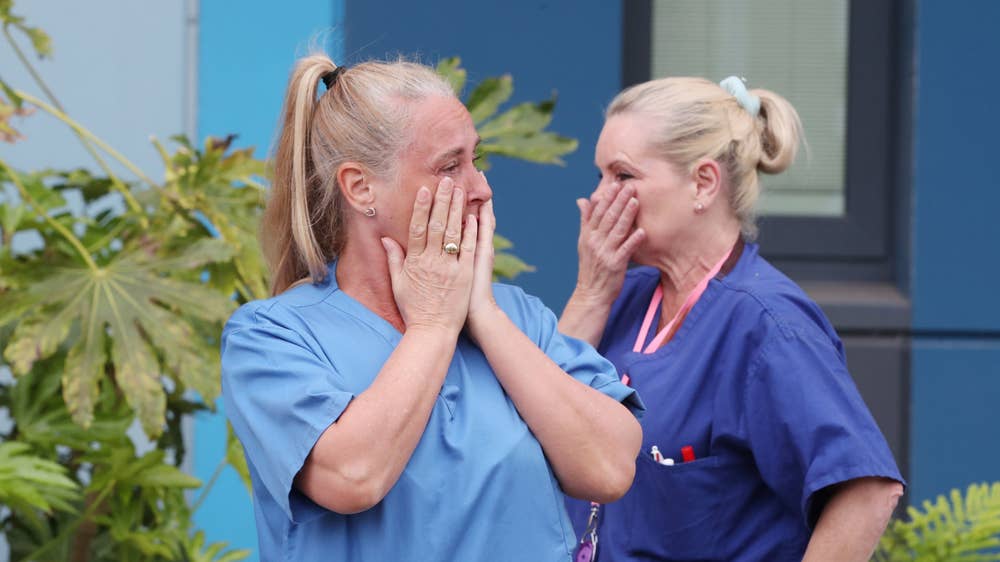

1/30
Staff react outside Salford Royal Hospital in Manchester during a minute’s silence to pay tribute to the NHS staff and key workers who have died during the coronavirus outbreak
PA

2/30
Staff inside Camberwell bus depot in London, during a minute’s silence
PA
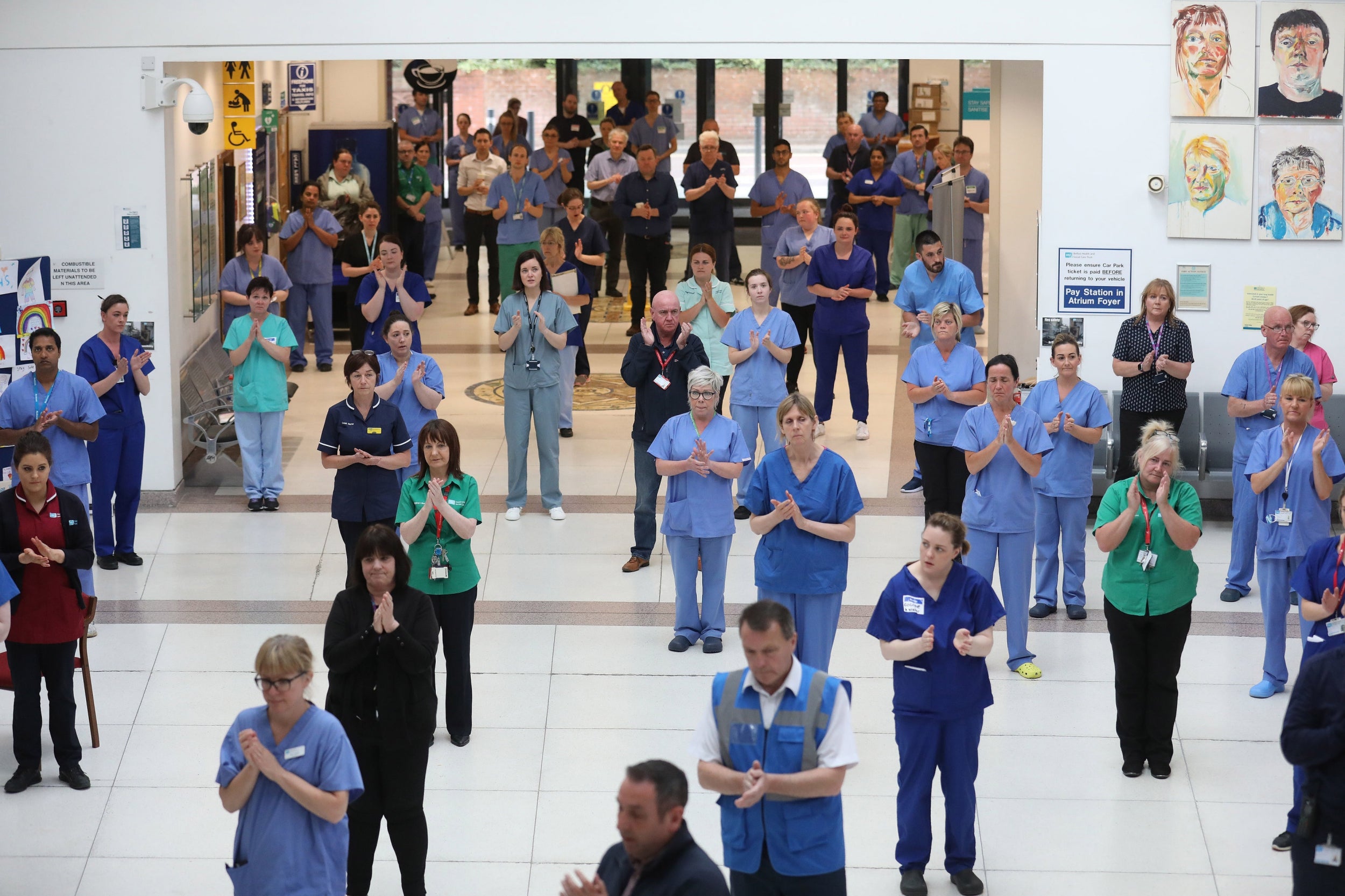
3/30
NHS staff at the Mater hospital in Belfast, during a minute’s silence to pay tribute to the NHS staff and key workers who have died during the coronavirus outbreak.
PA

4/30
Shoppers observe a minute’s silence in Tescos in Shoreham
Getty
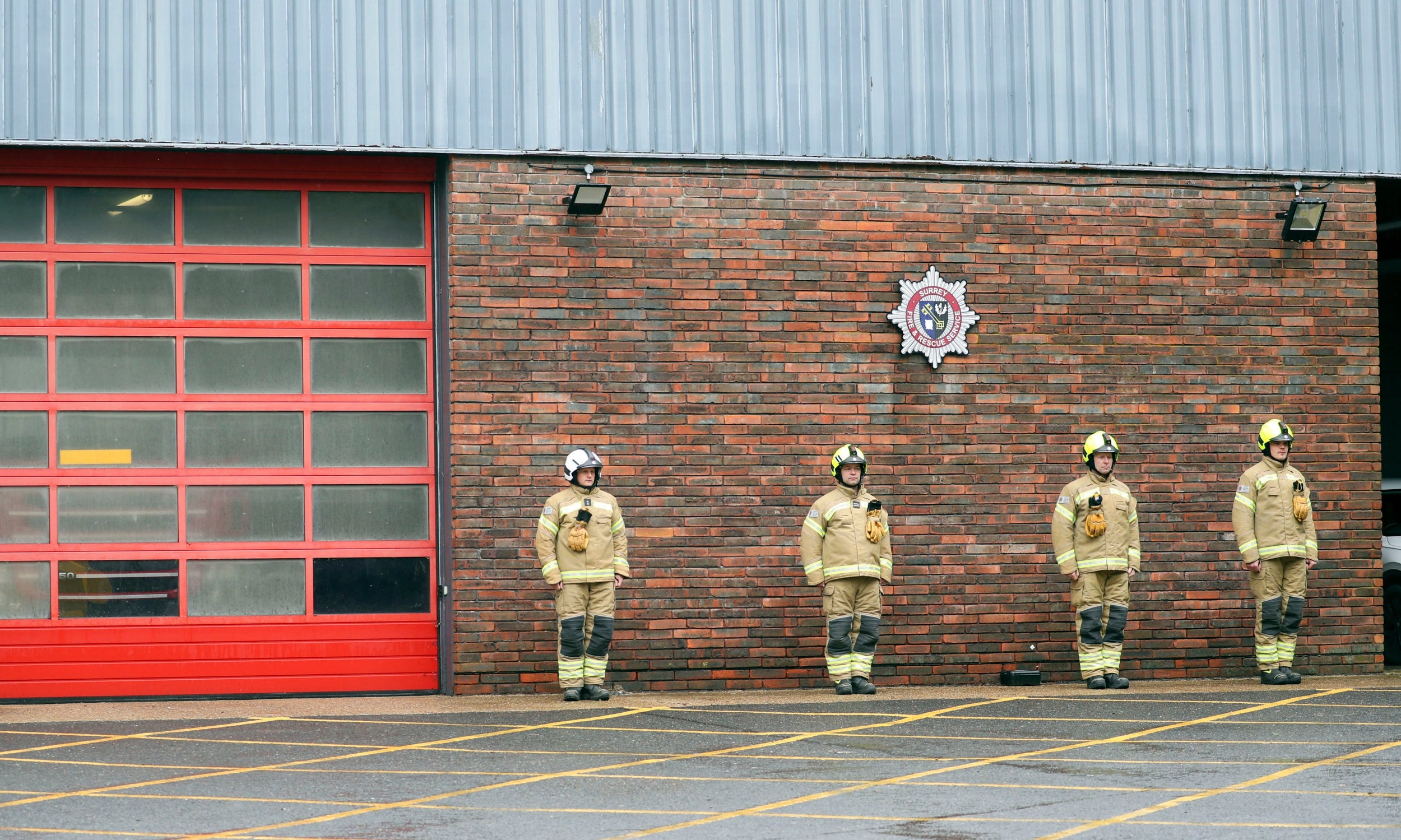
5/30
Firefighters outside Godstone fire station
PA

6/30 Salford Royal Hospital
Getty
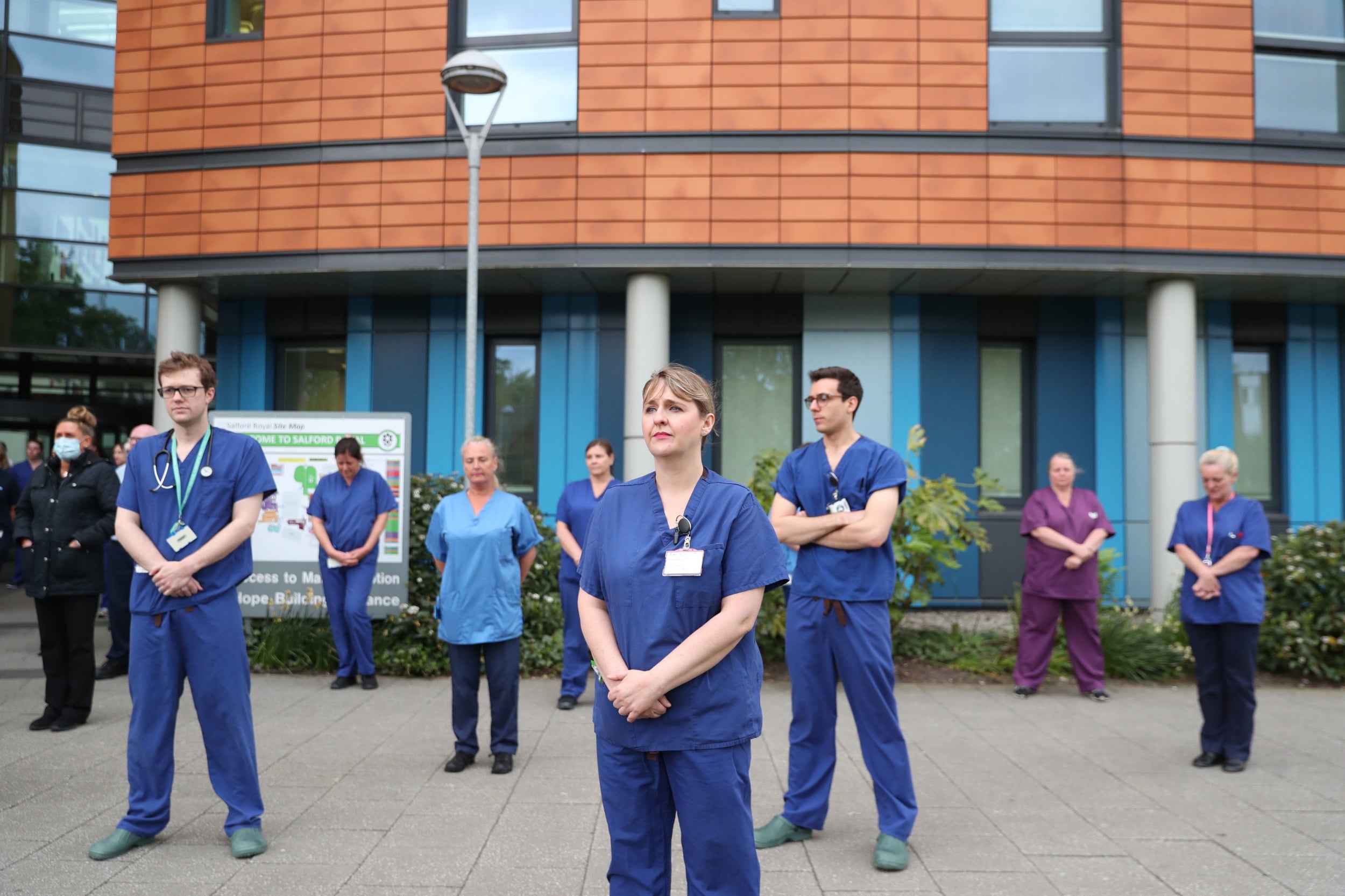
7/30 Salford Royal Hospital
PA
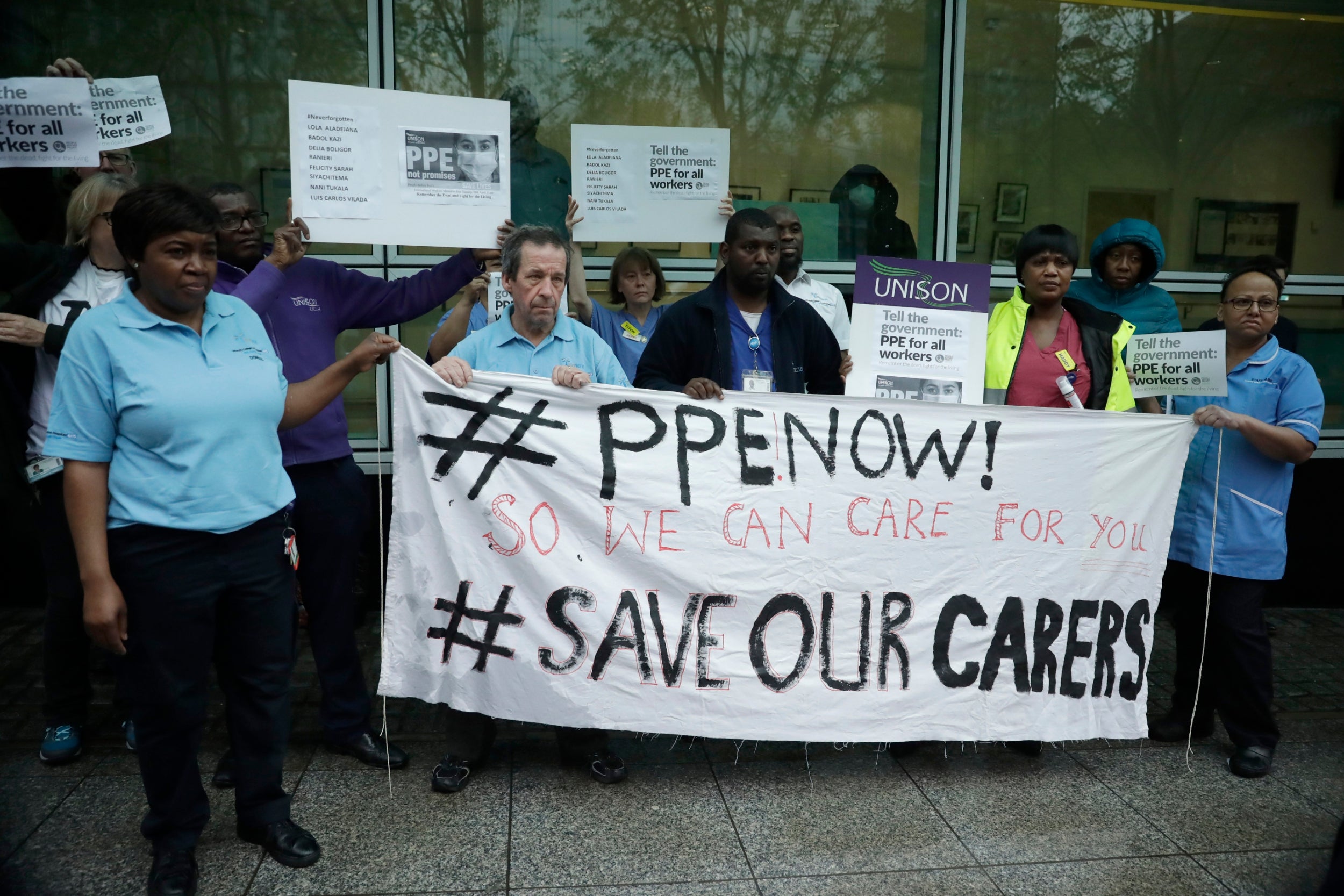
8/30
Hospital workers take part in a protest calling on the British government to provide PPE across Britain for all workers in care, the NHS and other vital public services after a nationwide minute’s silence at University College Hospital in London
AP
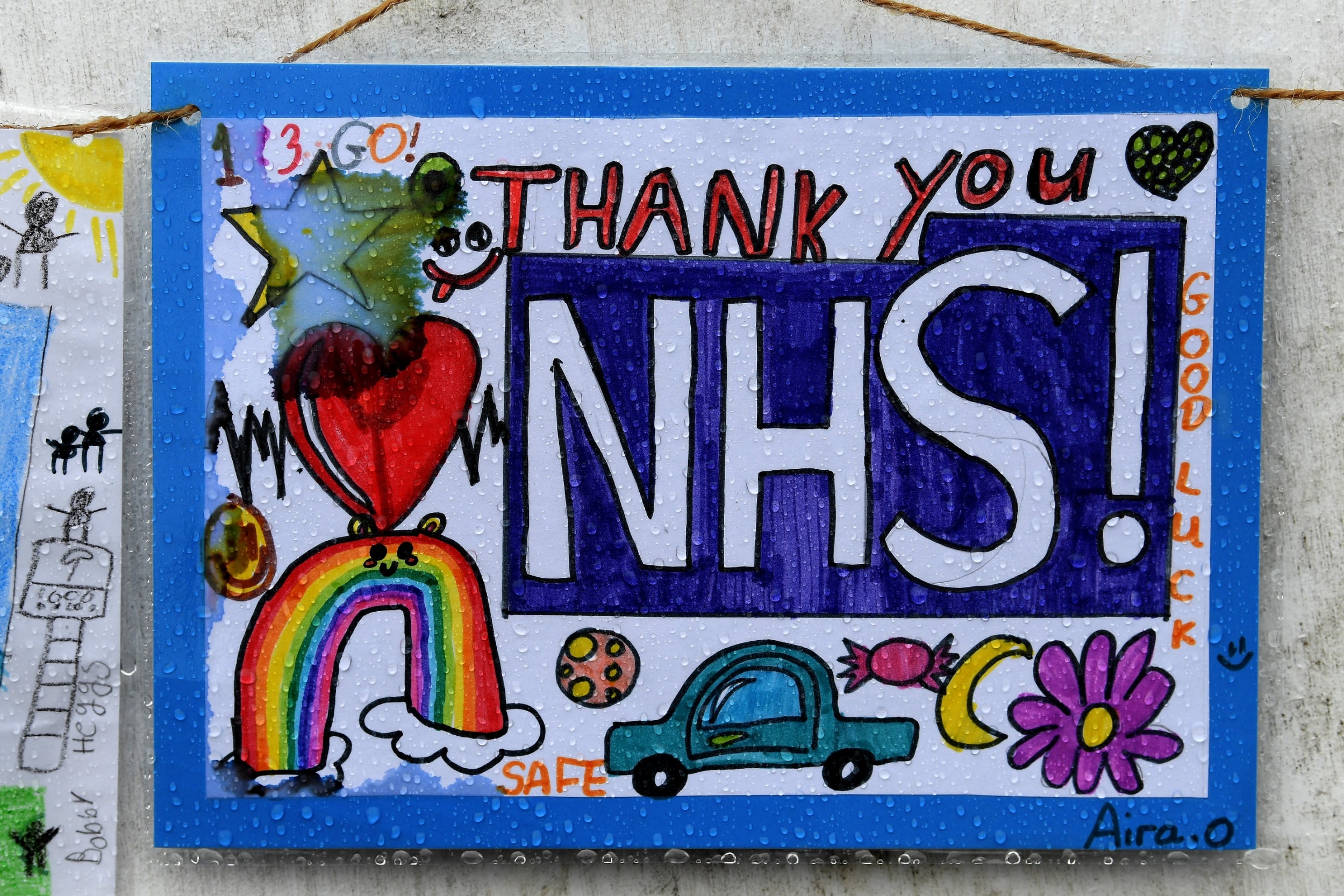
9/30
A school children’s poster hanging outside Glenfield Hospital during a minute’s silence
Getty
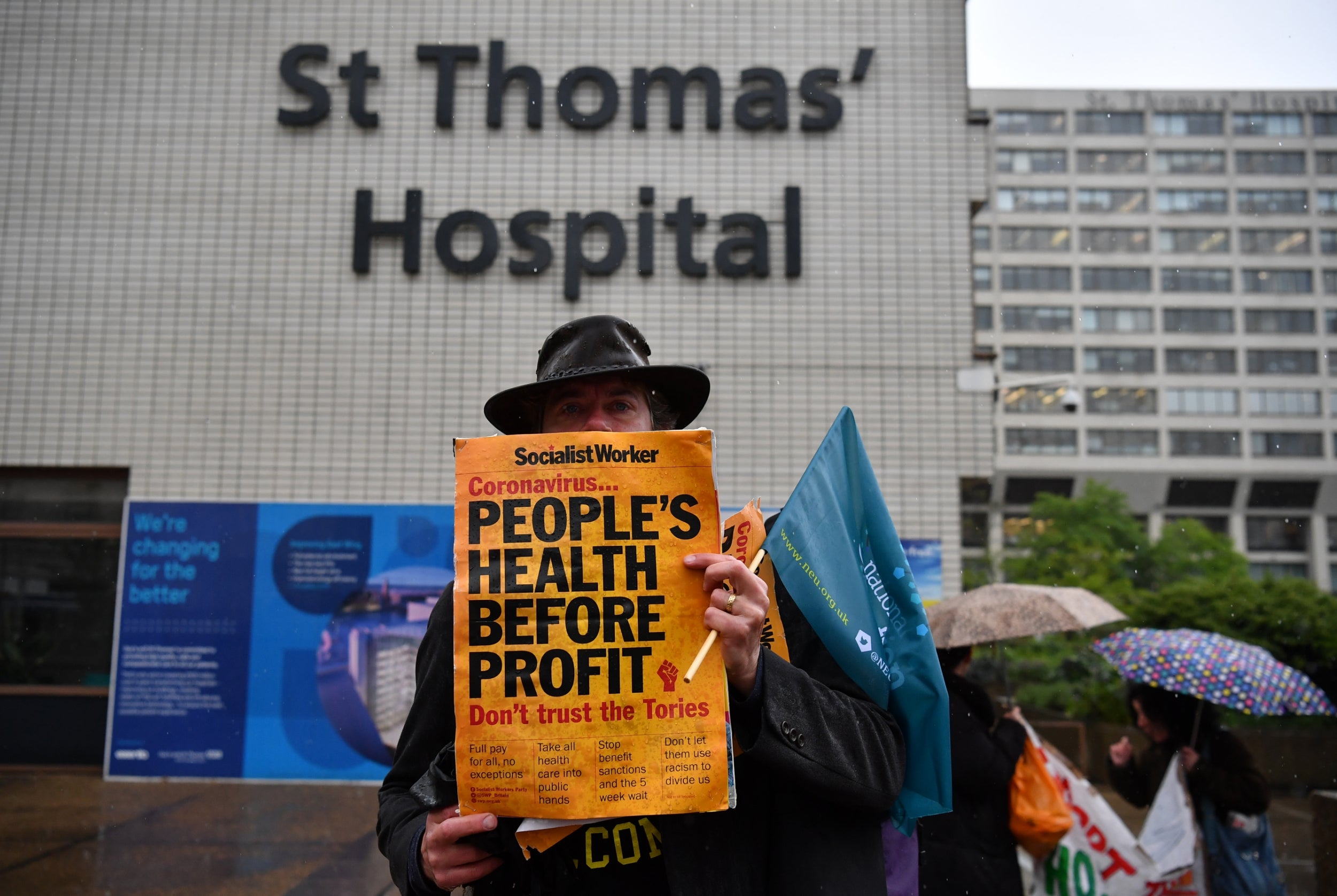
10/30
A man holds a placard that reads “People’s health before profit” outside St Thomas hospital
Getty
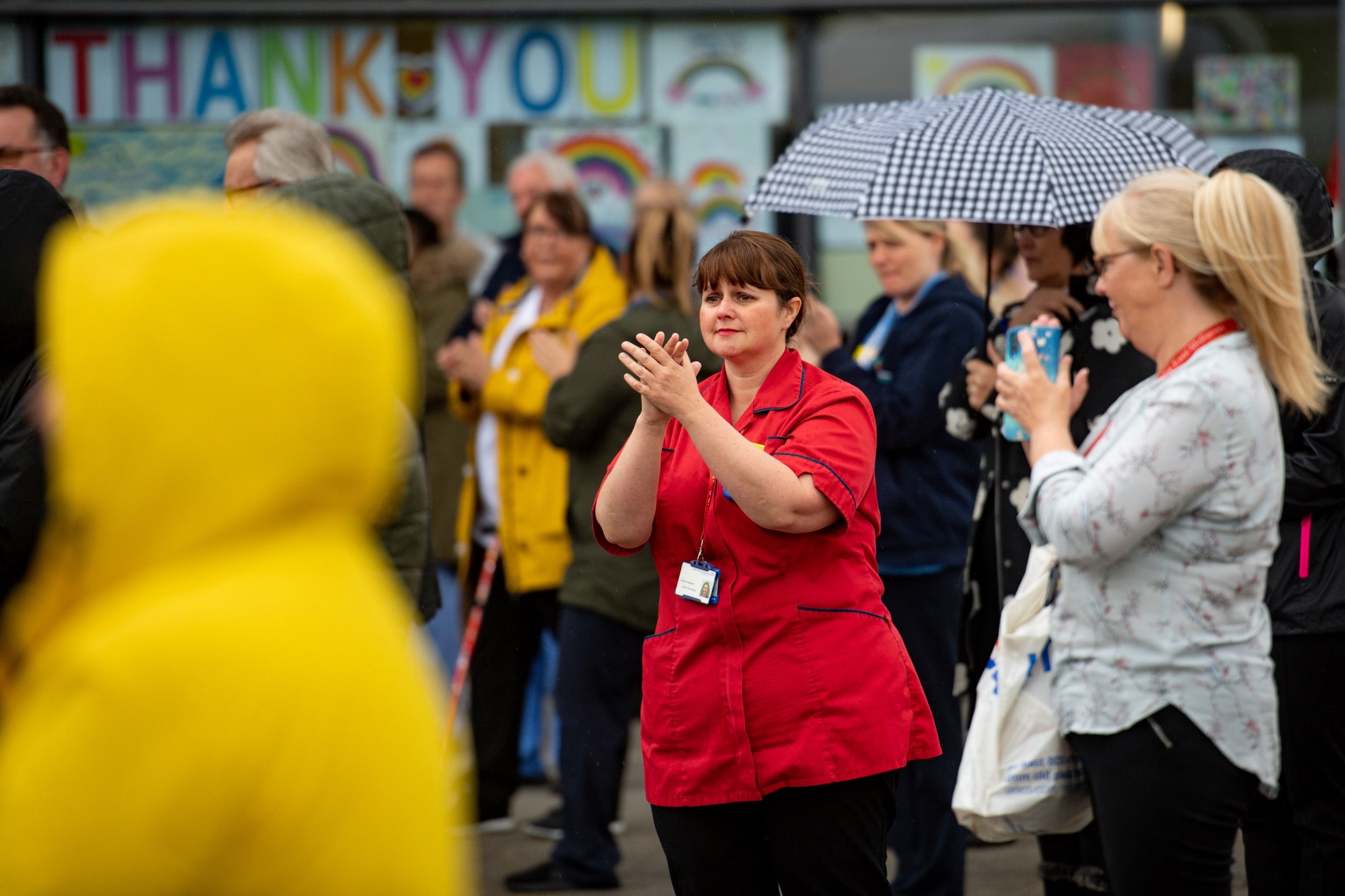
11/30
Staff members applaud outside the Royal Derby Hospital, following a minute’s silence
PA
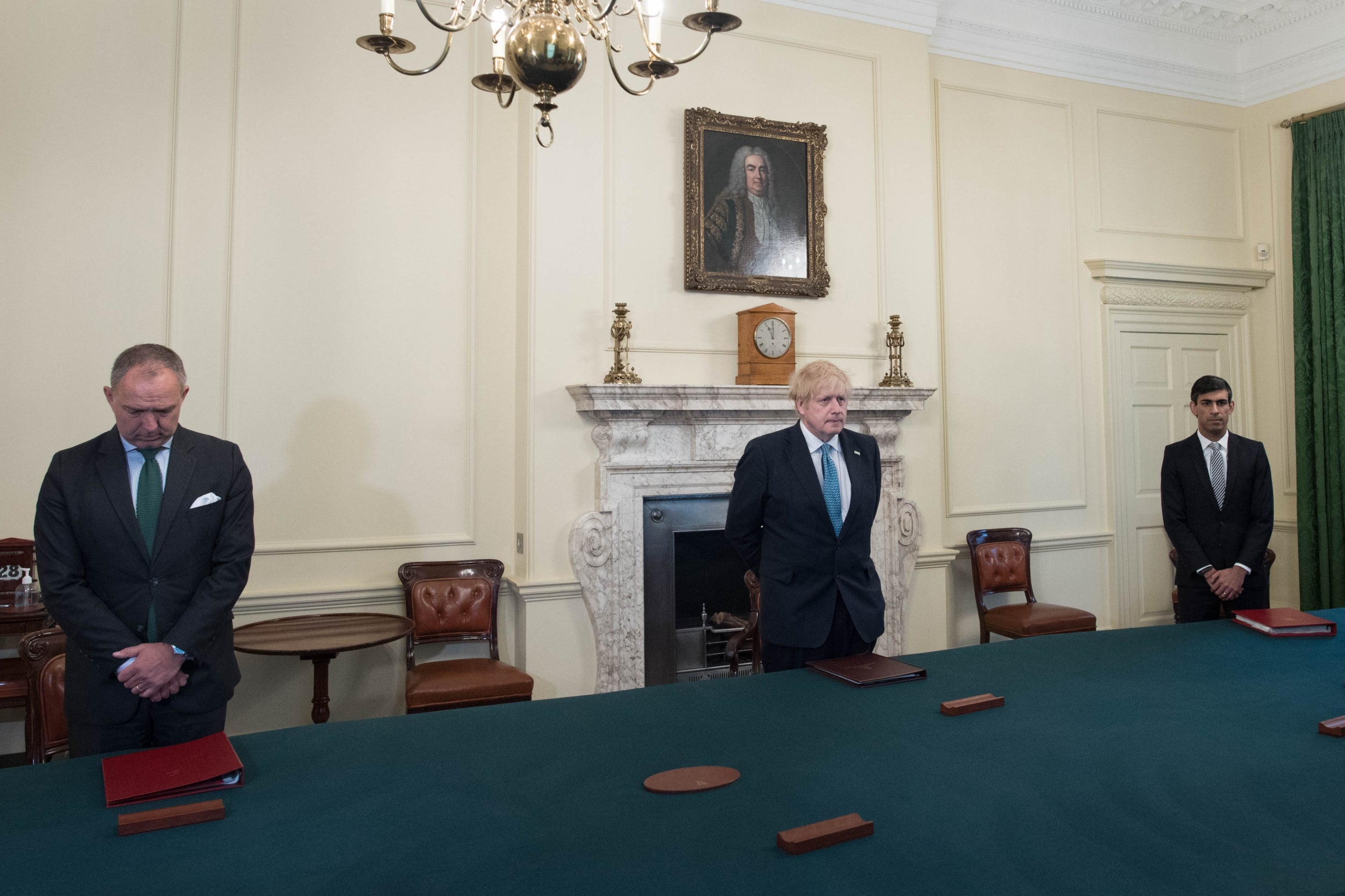
12/30
Cabinet Secretary Mark Sedwill, Prime minister Boris Johnson and Chancellor of the Exchequer Rishi Sunak, stand inside 10 Downing Street, London, to observe a minutes silence in tribute to the NHS staff and key workers who have died during the coronavirus outbreak
PA
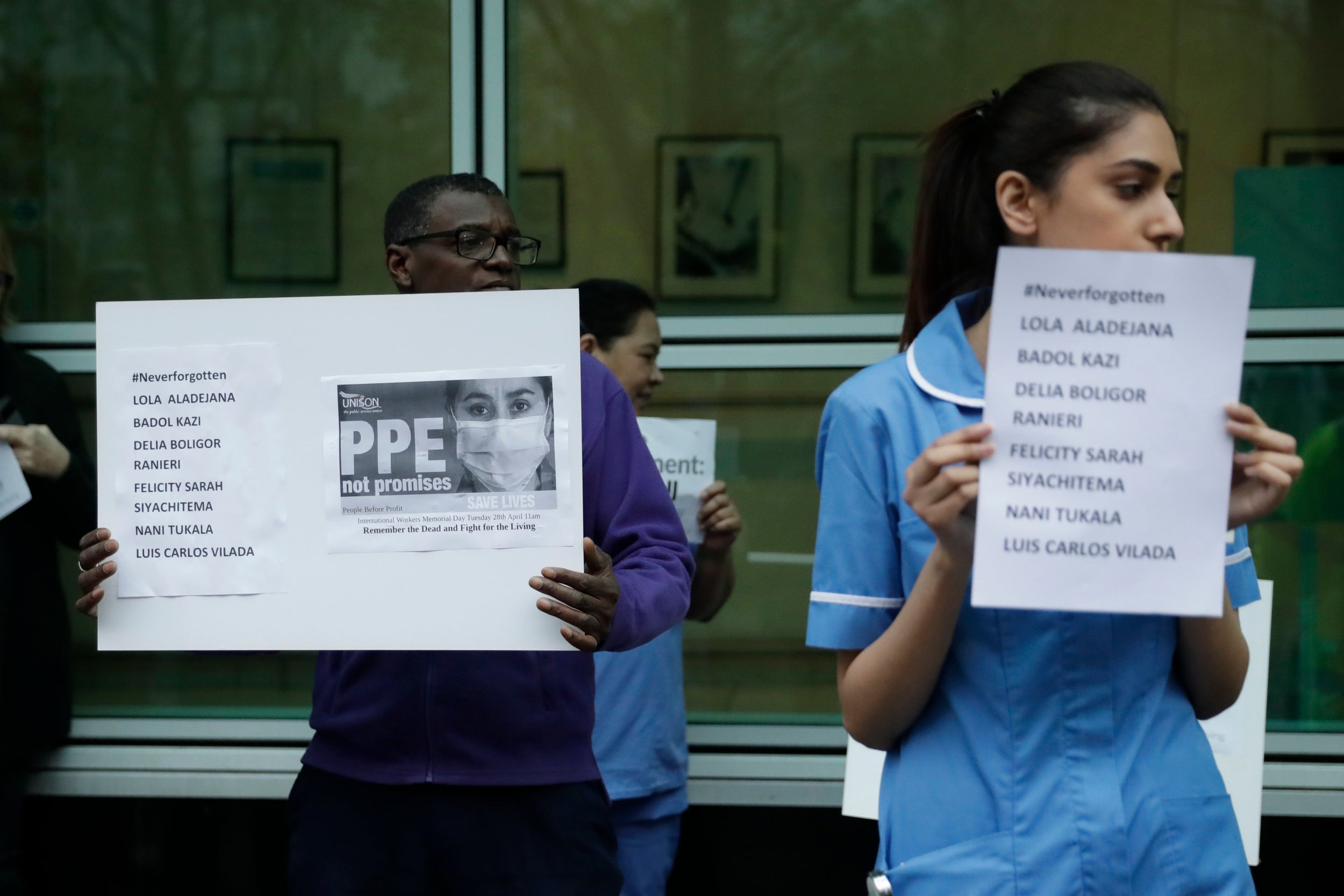
13/30 University College Hospital, London
Hospital workers hold placards with the names of their colleagues who have died from coronavirus as they take part in a protest calling on the British government to provide PPE
AP
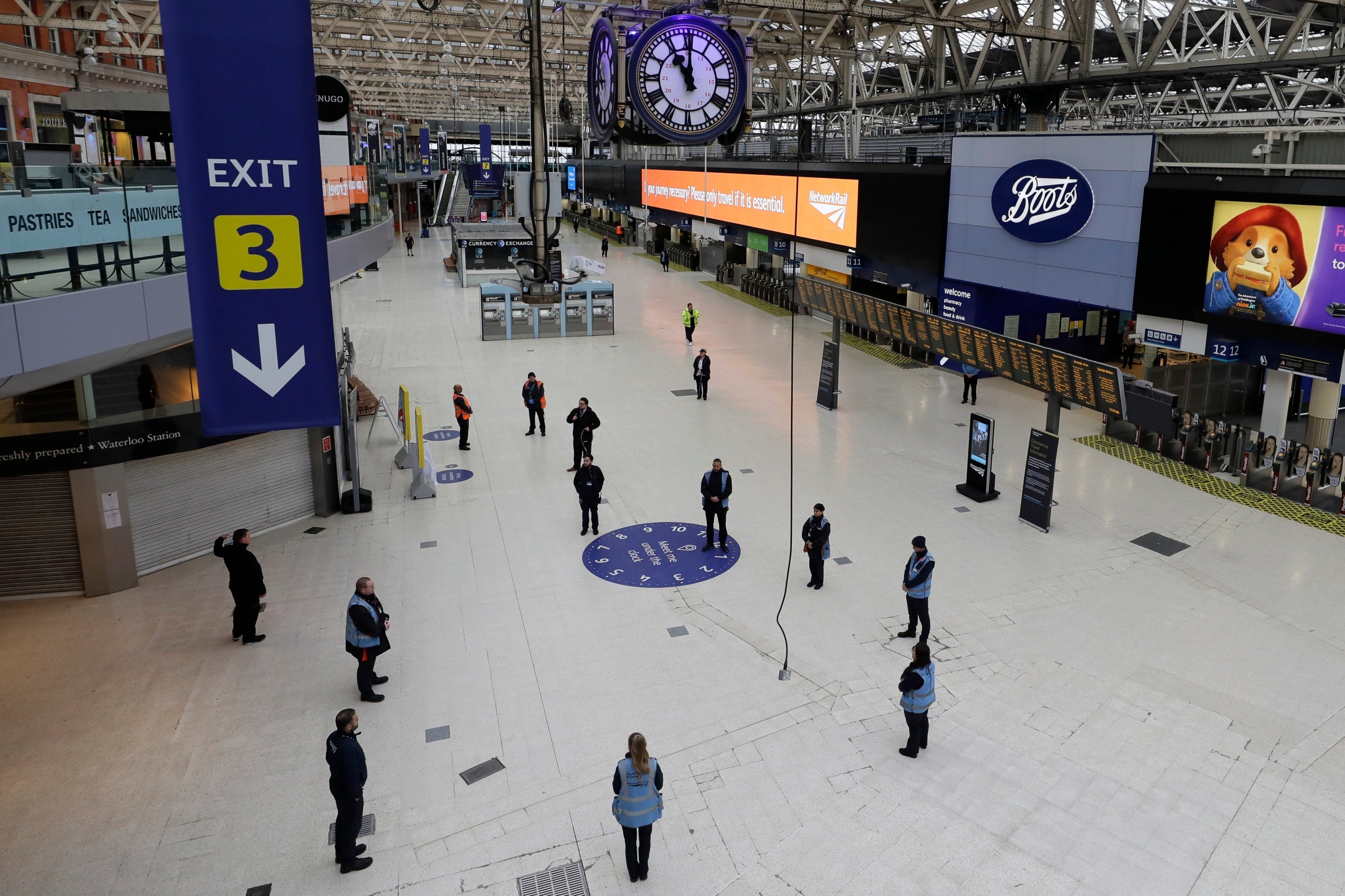
14/30
Staff at Waterloo Station in London, stand to observe a minute’s silence, to pay tribute to NHS and key workers who have died with coronavirus
AP

15/30
Medical staff at the Louisa Jordan hospital stand during a UK wide minutes silence to commemorate the key workers who have died with coronavirus in Glasgow
Getty
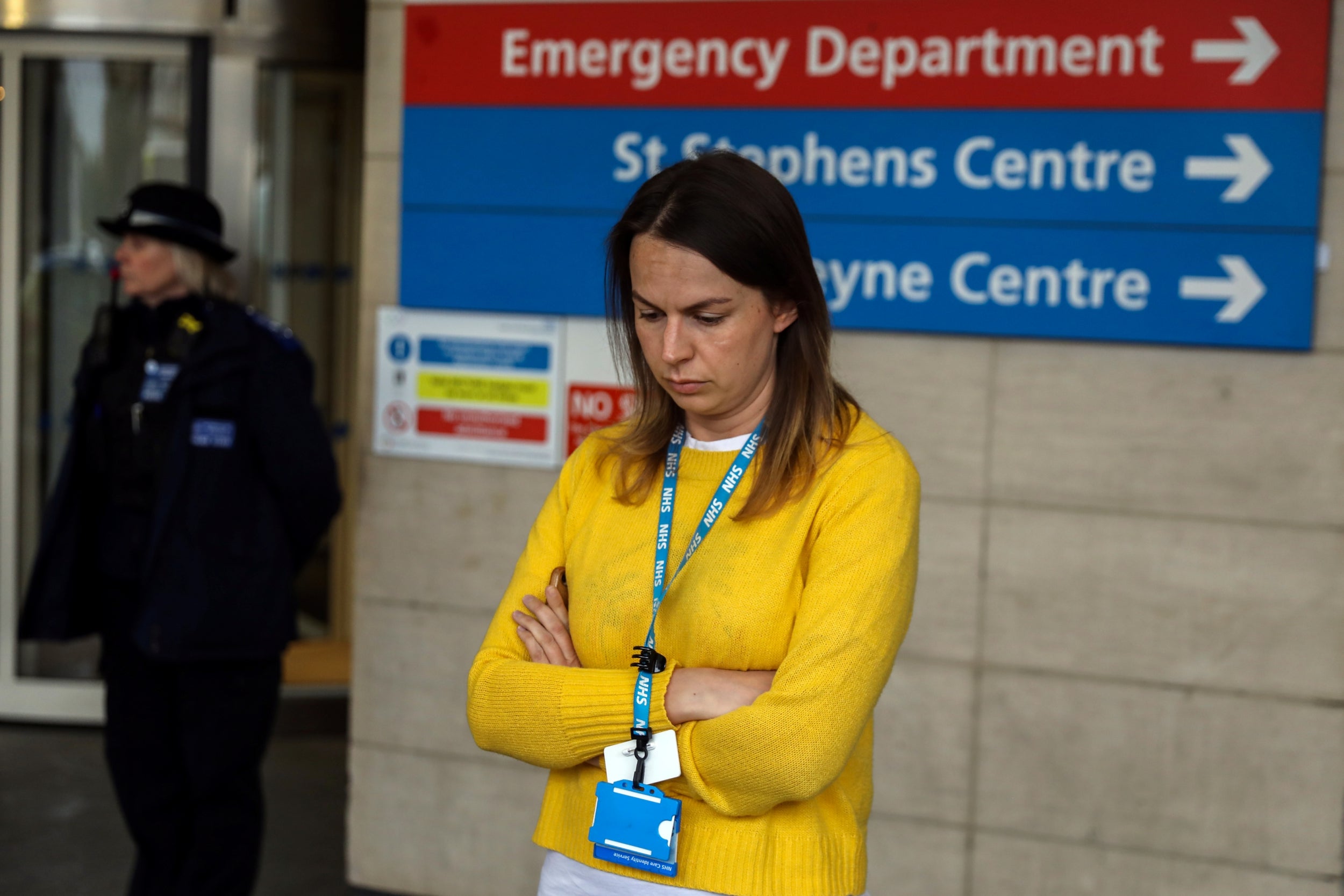
16/30 London
An NHS worker observes a minute’s silence at Chelsea and Westminster Hospital
Reuters
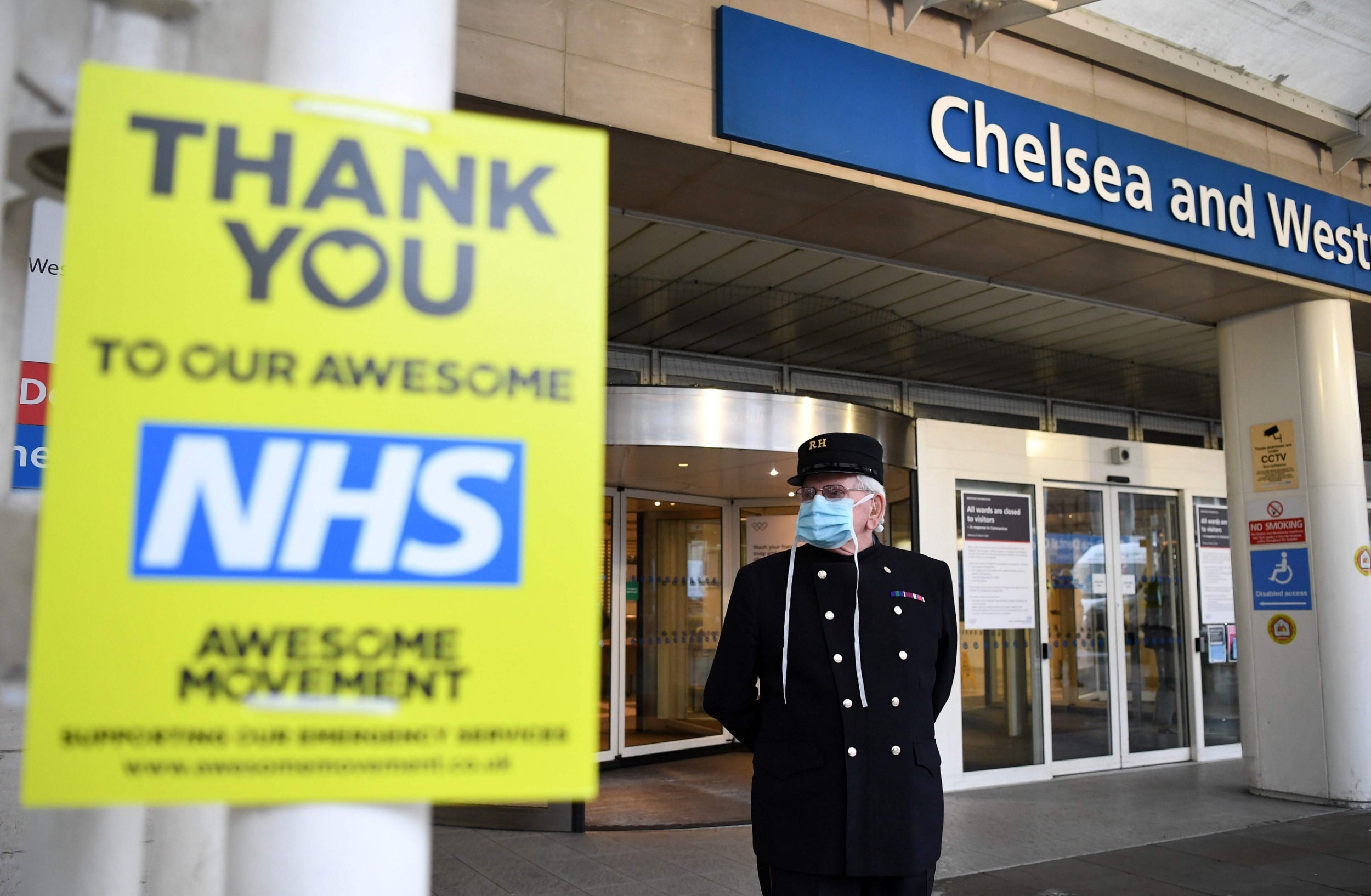
17/30 Chelsea and Westminster Hospital in London
AFP via Getty
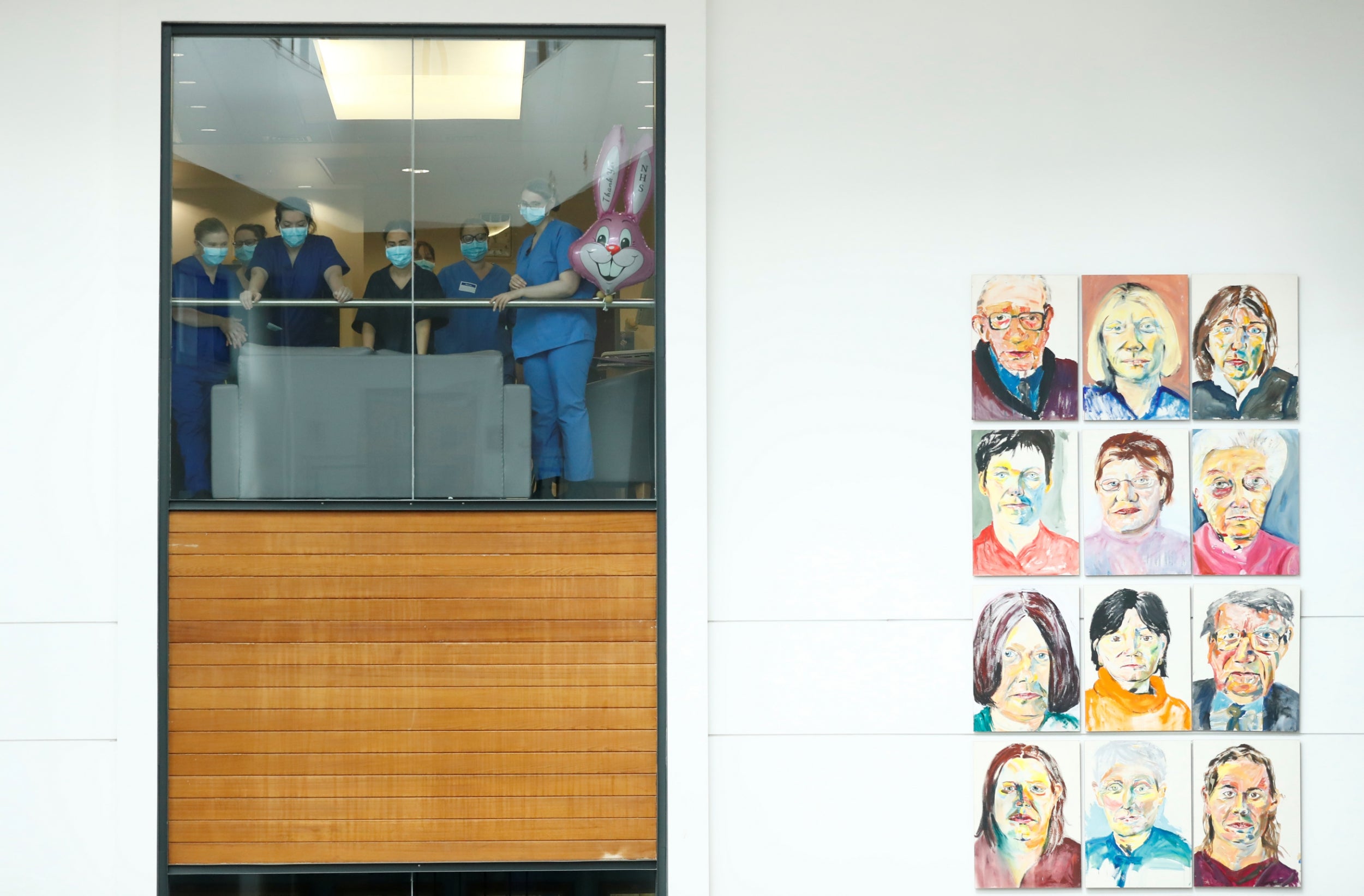
18/30 Belfast, Northern Ireland
NHS staff observe a minutes silence at Mater Infirmorum Hospital
Reuters
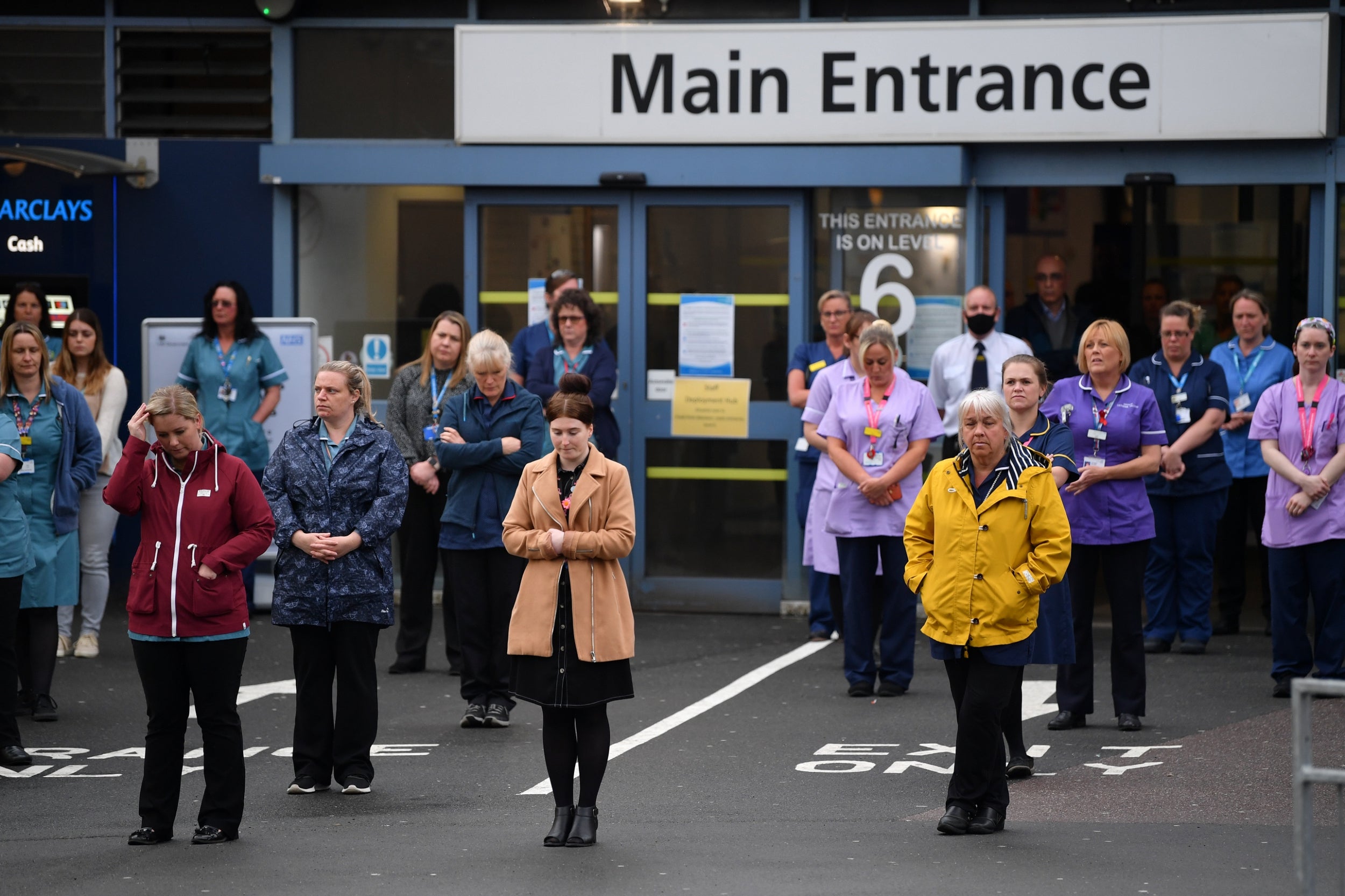
19/30 Plymouth
NHS workers hold a minute’s silence outside the main entrance of Derriford Hospital
Getty
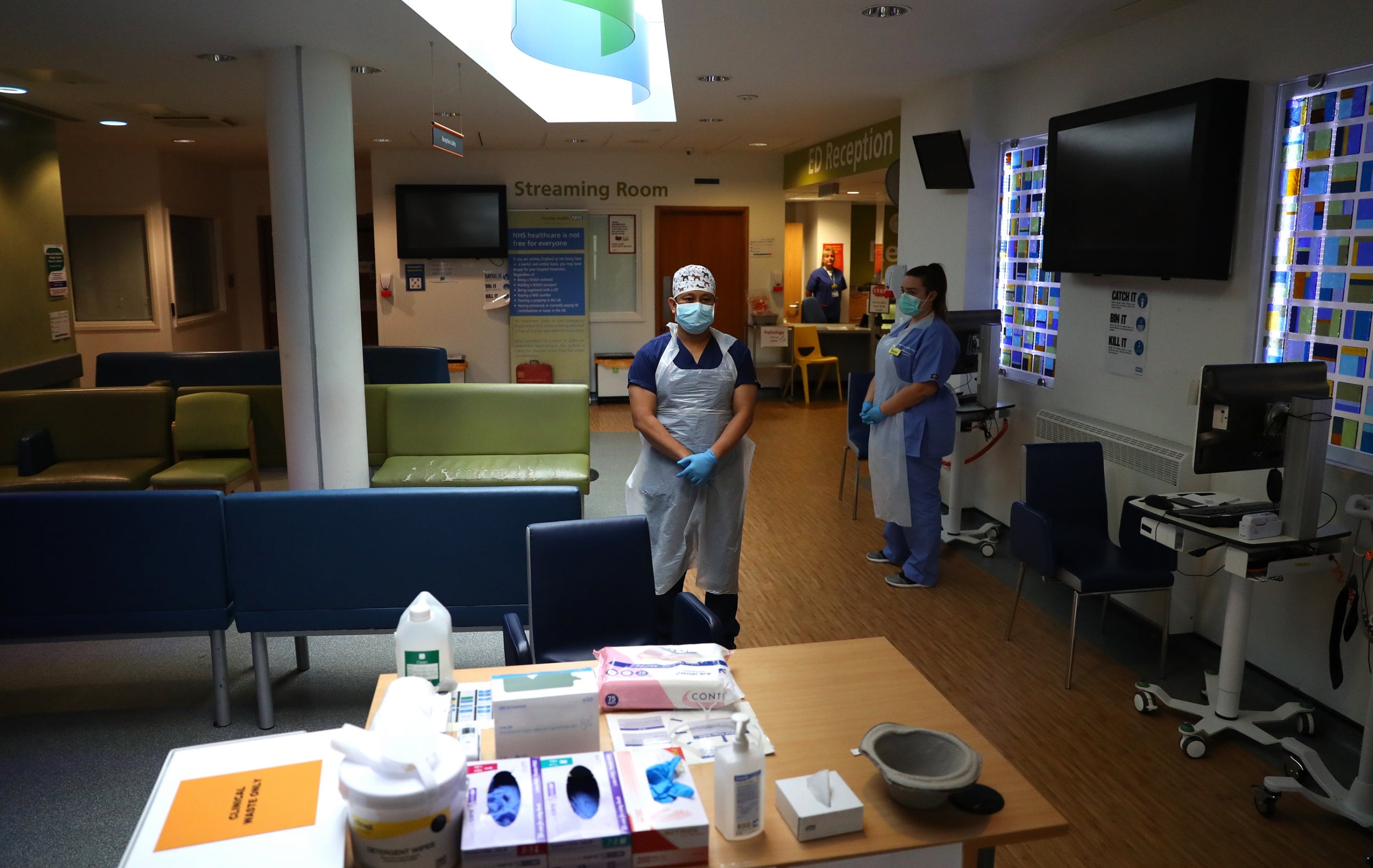
20/30
NHS Frimley Park Hospital staff at the A&E department observe a minute’s silence
Getty

21/30 Mater Infirmorum Hospital
People applaud after a minutes silence in honour of key workers
Reuters
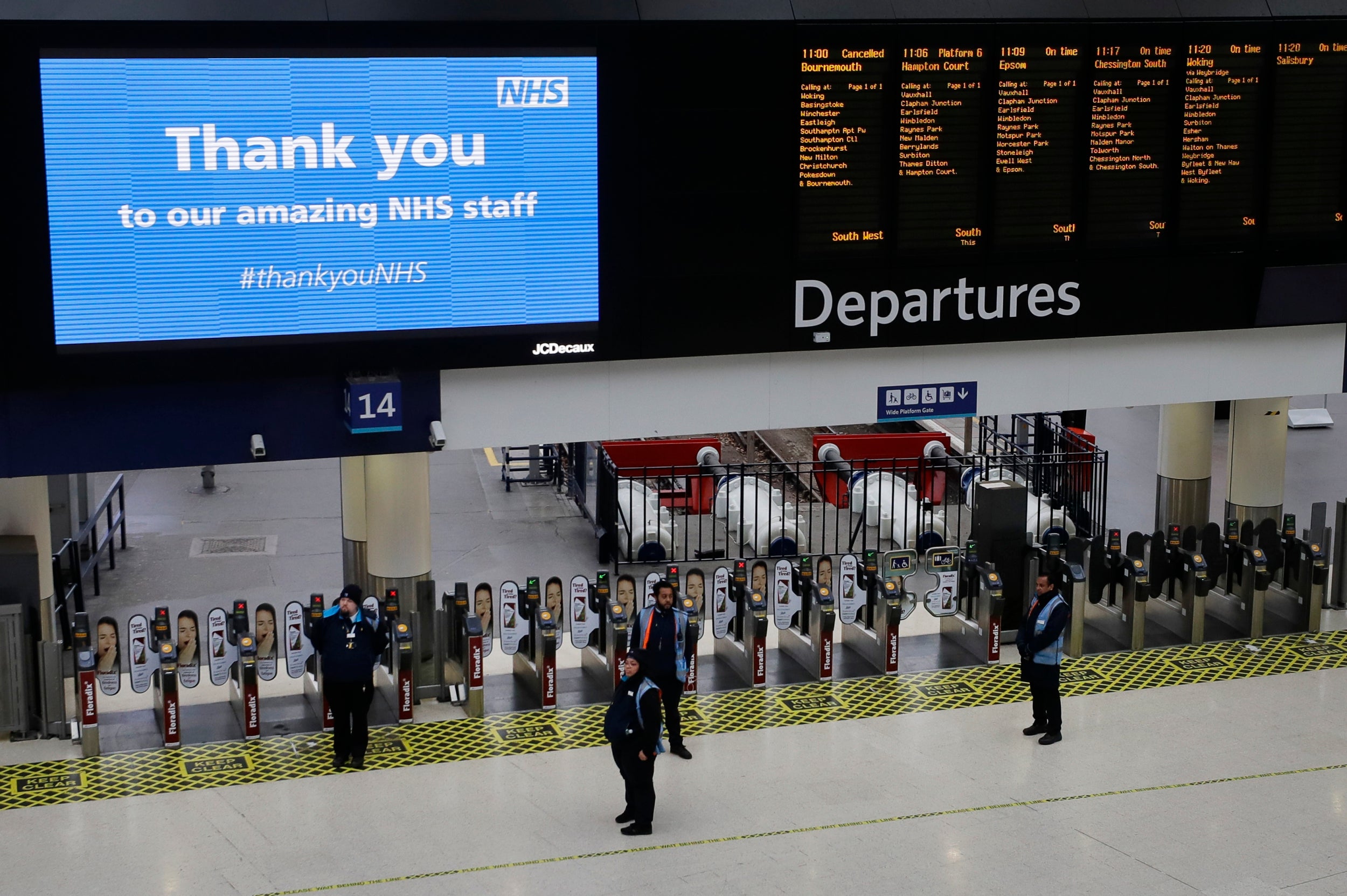
22/30 Waterloo Station, London
AP

23/30
Wreaths laid outside Sheffield town hall
PA

24/30
A group of trade unionists and supporters standing outside Sheffield town hall
PA
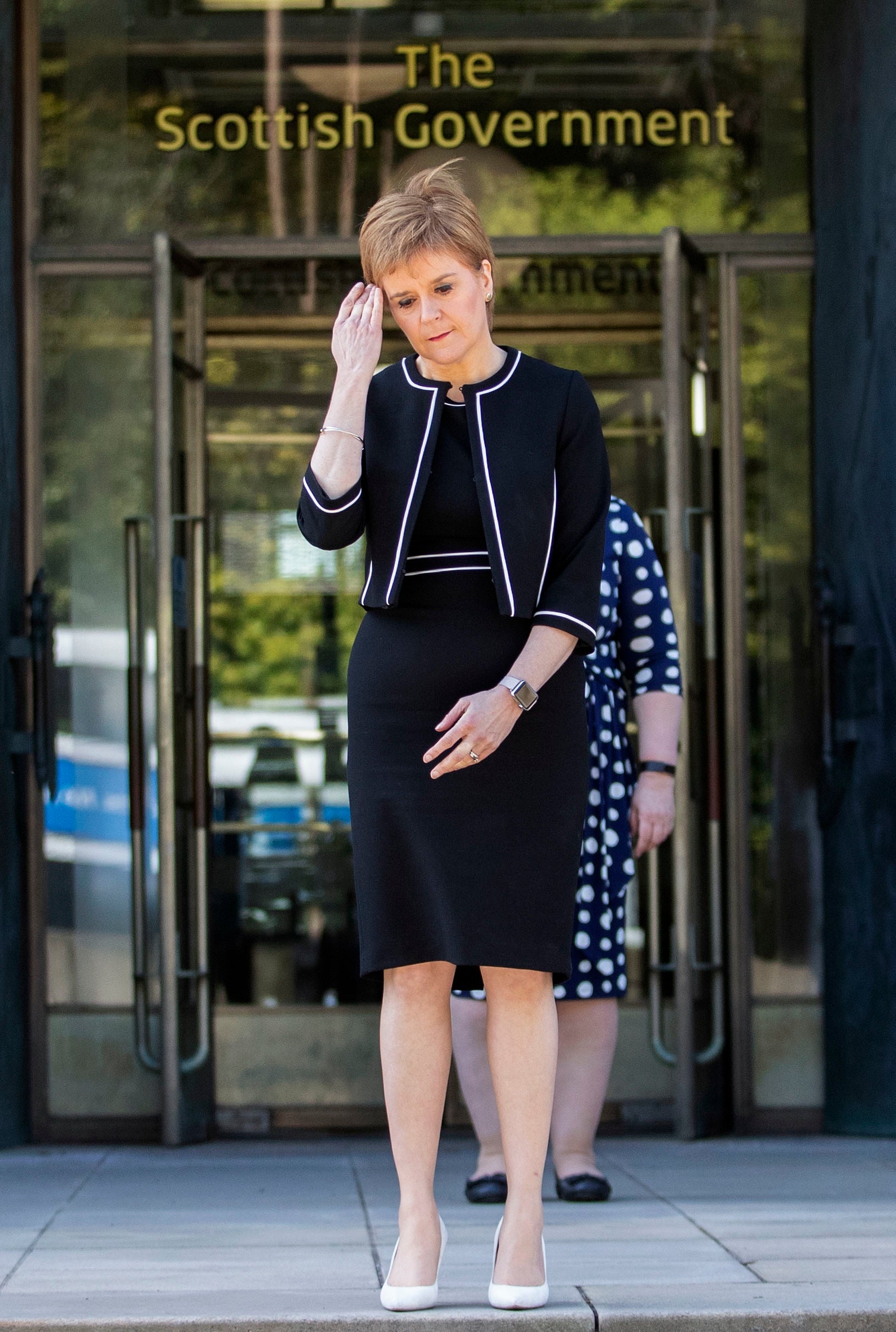
25/30
First Minister Nicola Sturgeon stands outside St Andrew’s House in Edinburgh to observe a minute’s silence in tribute to the NHS staff and key workers who have died during the coronavirus outbreak
PA
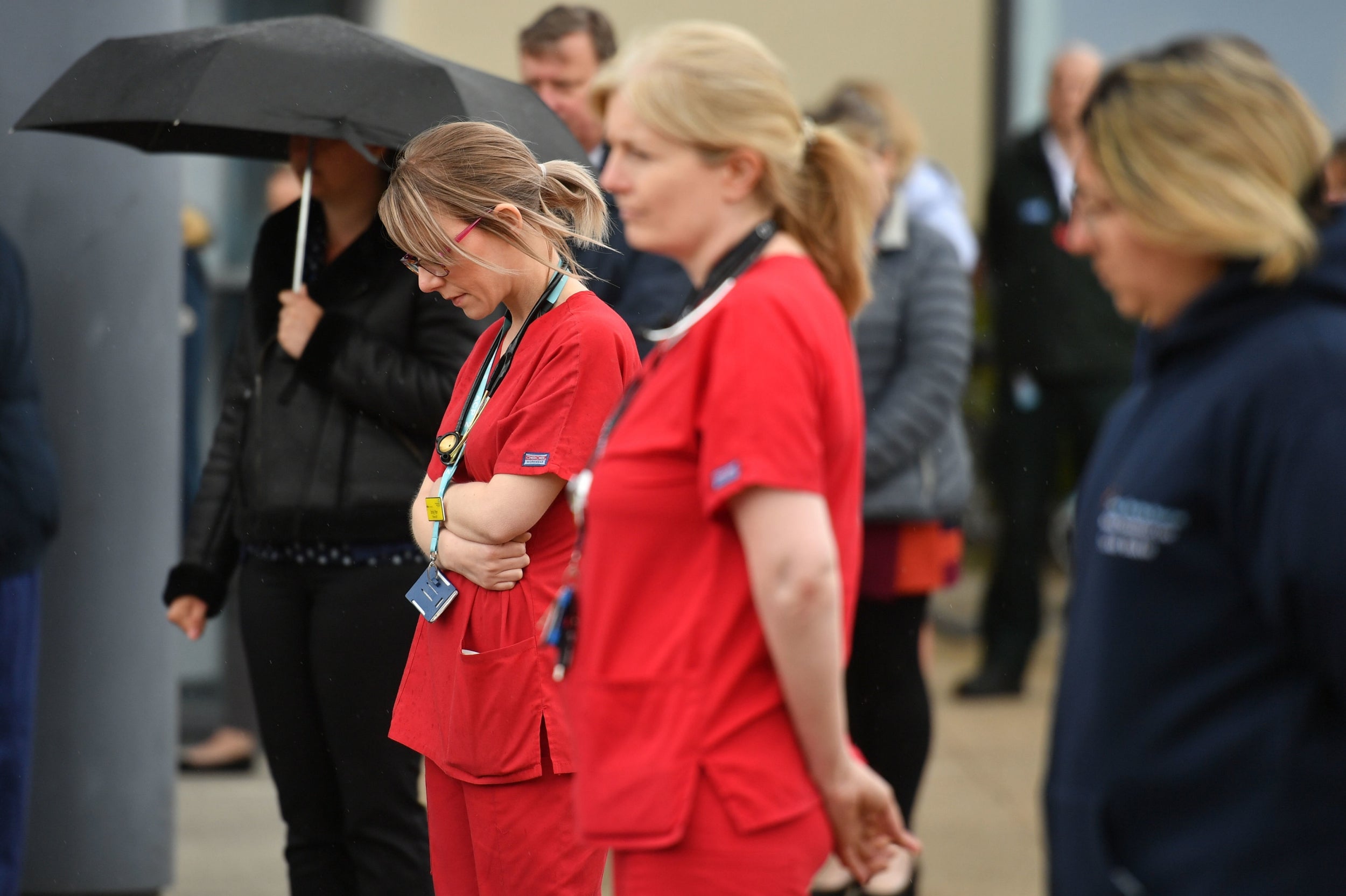
26/30
Staff stand outside the Royal Derby Hospital, during a minutes silence
PA
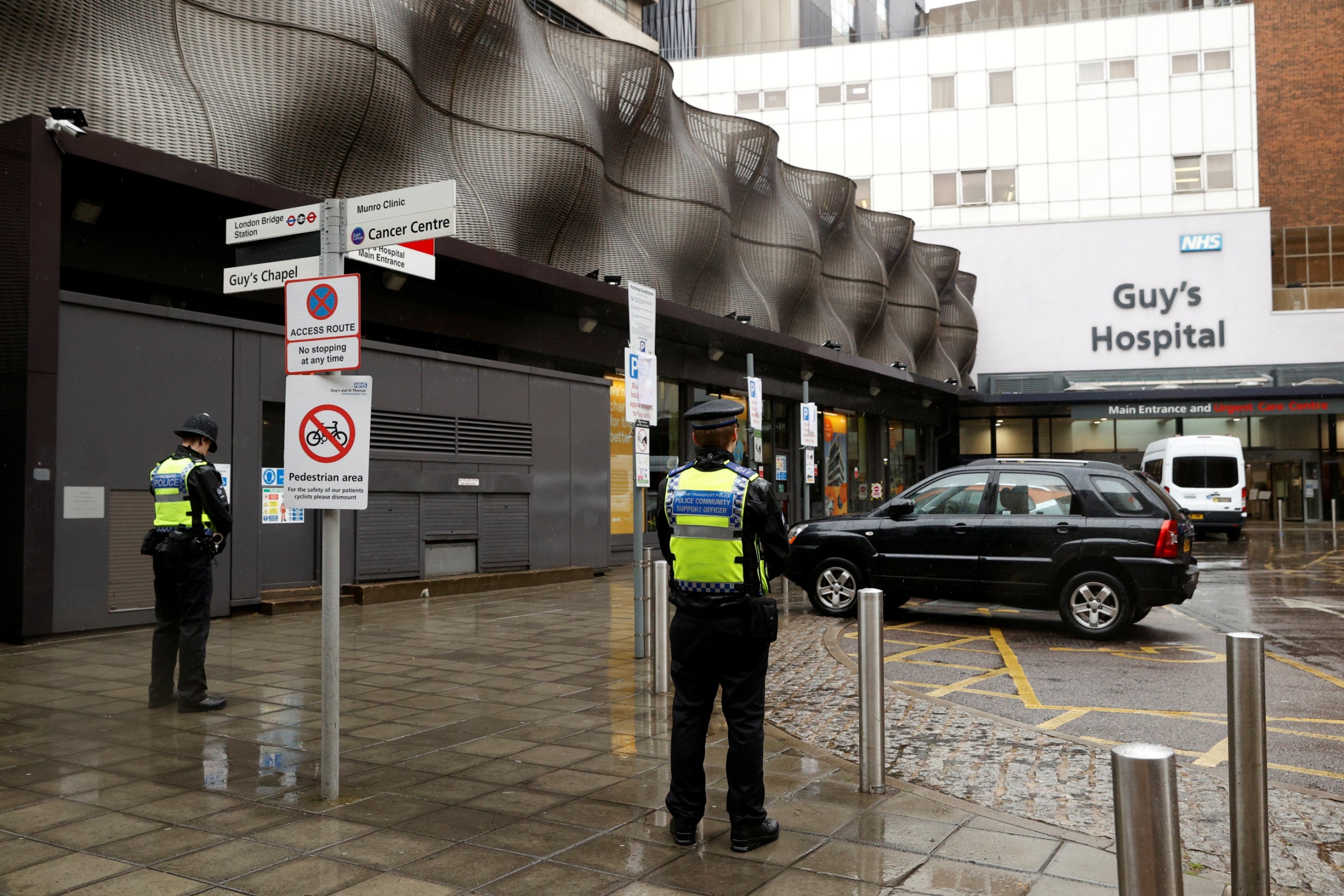
27/30 London
Police officers observe a minutes silence at Guy’s Hospital
Reuters
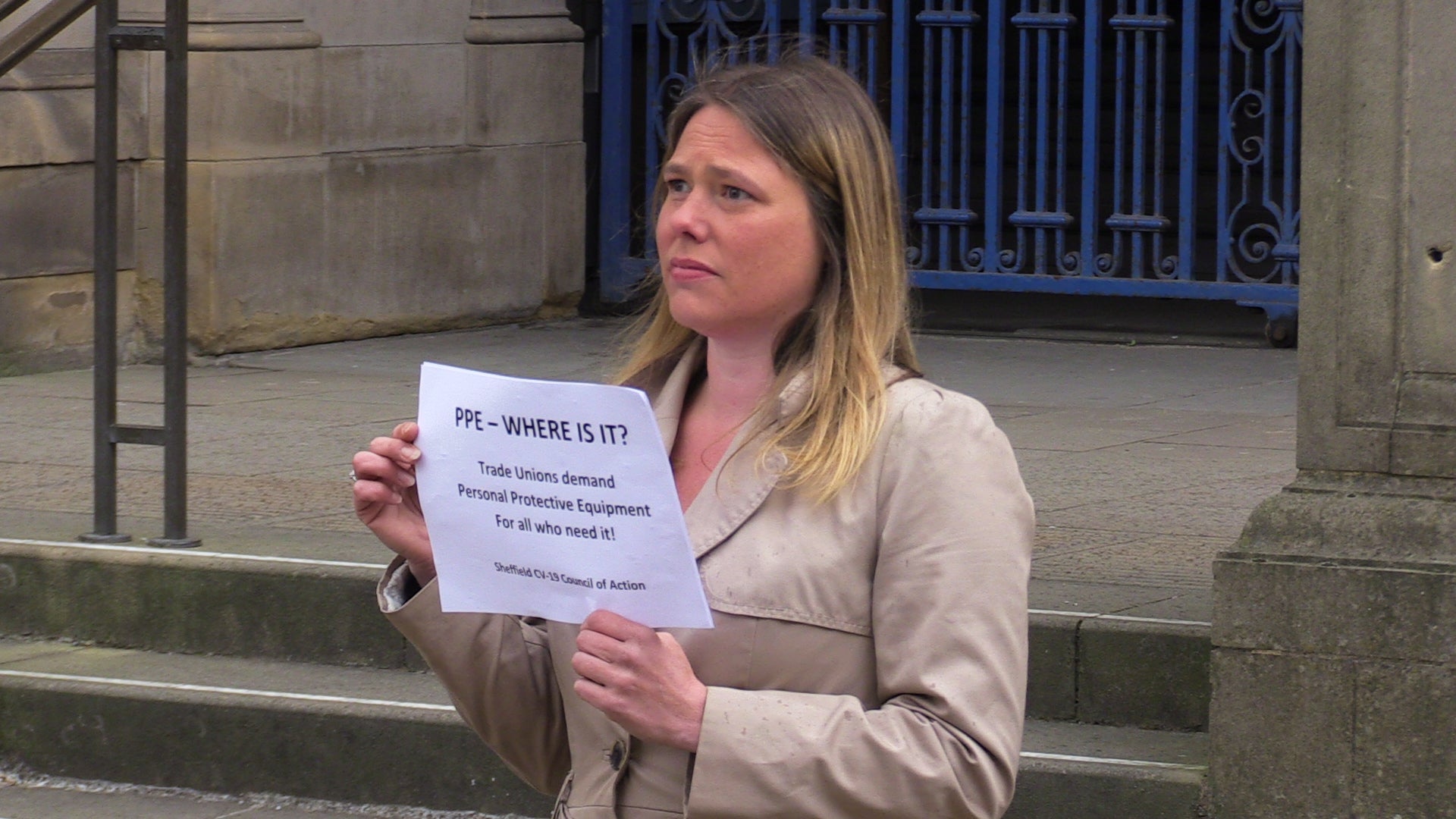
28/30
A woman standing outside Sheffield town hall
PA
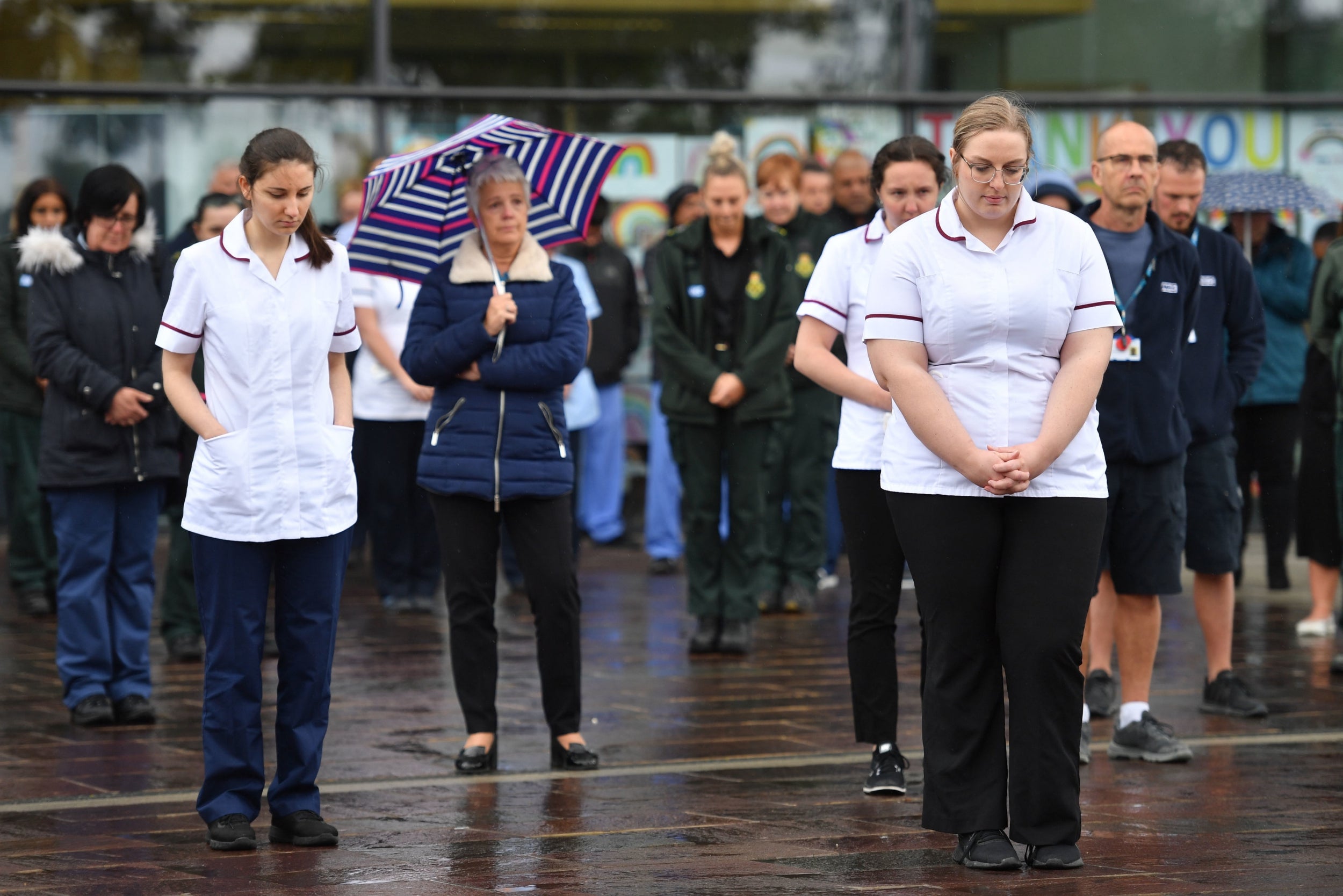
29/30 Royal Derby Hospital
PA
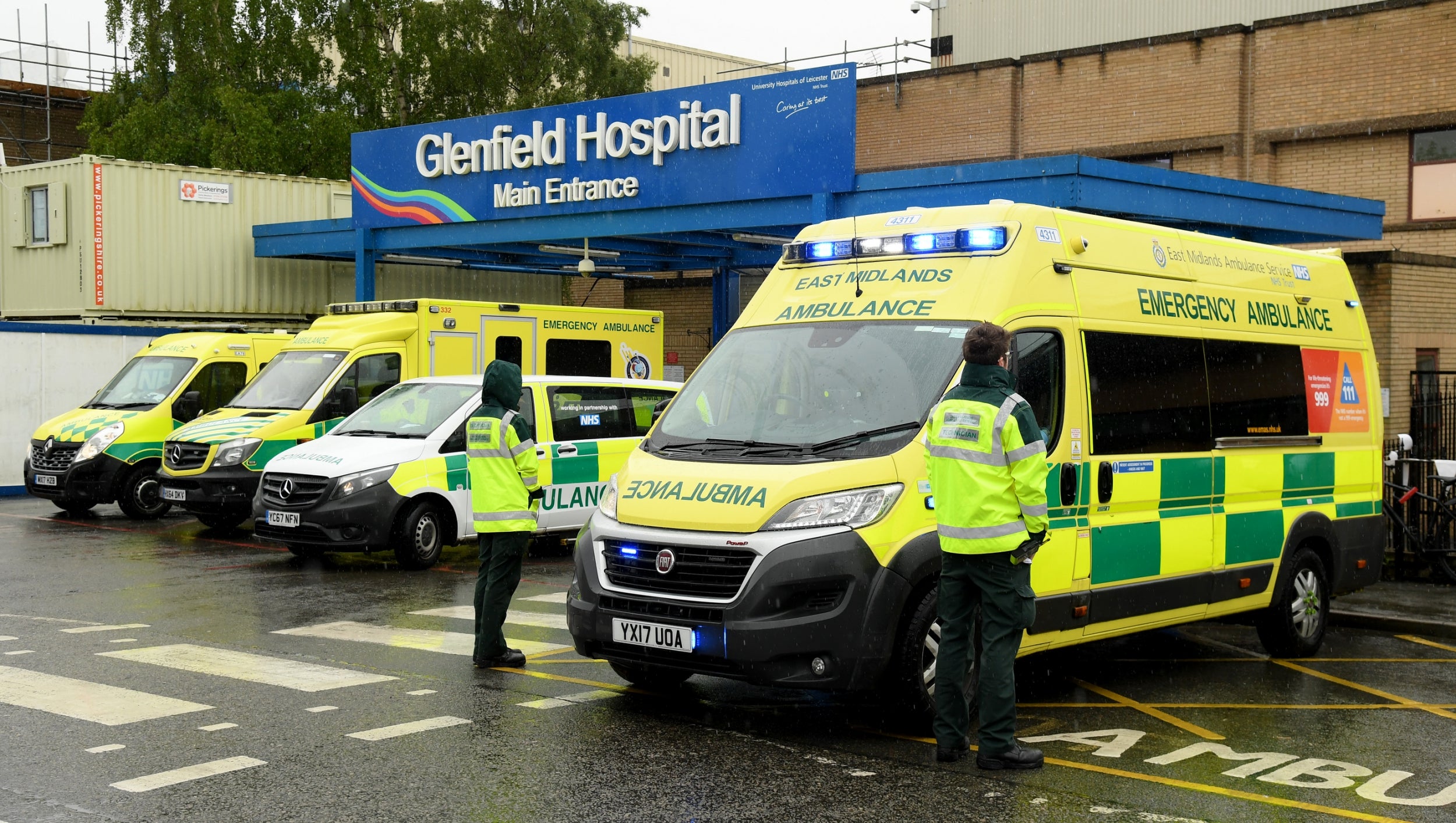
30/30 Leicester,
NHS workers during a minute’s silence outside Glenfield Hospital
Getty

1/30
Staff react outside Salford Royal Hospital in Manchester during a minute’s silence to pay tribute to the NHS staff and key workers who have died during the coronavirus outbreak
PA

2/30
Staff inside Camberwell bus depot in London, during a minute’s silence
PA

3/30
NHS staff at the Mater hospital in Belfast, during a minute’s silence to pay tribute to the NHS staff and key workers who have died during the coronavirus outbreak.
PA

4/30
Shoppers observe a minute’s silence in Tescos in Shoreham
Getty

5/30
Firefighters outside Godstone fire station
PA

6/30 Salford Royal Hospital
Getty

7/30 Salford Royal Hospital
PA

8/30
Hospital workers take part in a protest calling on the British government to provide PPE across Britain for all workers in care, the NHS and other vital public services after a nationwide minute’s silence at University College Hospital in London
AP

9/30
A school children’s poster hanging outside Glenfield Hospital during a minute’s silence
Getty

10/30
A man holds a placard that reads “People’s health before profit” outside St Thomas hospital
Getty

11/30
Staff members applaud outside the Royal Derby Hospital, following a minute’s silence
PA

12/30
Cabinet Secretary Mark Sedwill, Prime minister Boris Johnson and Chancellor of the Exchequer Rishi Sunak, stand inside 10 Downing Street, London, to observe a minutes silence in tribute to the NHS staff and key workers who have died during the coronavirus outbreak
PA

13/30 University College Hospital, London
Hospital workers hold placards with the names of their colleagues who have died from coronavirus as they take part in a protest calling on the British government to provide PPE
AP

14/30
Staff at Waterloo Station in London, stand to observe a minute’s silence, to pay tribute to NHS and key workers who have died with coronavirus
AP

15/30
Medical staff at the Louisa Jordan hospital stand during a UK wide minutes silence to commemorate the key workers who have died with coronavirus in Glasgow
Getty

16/30 London
An NHS worker observes a minute’s silence at Chelsea and Westminster Hospital
Reuters

17/30 Chelsea and Westminster Hospital in London
AFP via Getty

18/30 Belfast, Northern Ireland
NHS staff observe a minutes silence at Mater Infirmorum Hospital
Reuters

19/30 Plymouth
NHS workers hold a minute’s silence outside the main entrance of Derriford Hospital
Getty

20/30
NHS Frimley Park Hospital staff at the A&E department observe a minute’s silence
Getty

21/30 Mater Infirmorum Hospital
People applaud after a minutes silence in honour of key workers
Reuters

22/30 Waterloo Station, London
AP

23/30
Wreaths laid outside Sheffield town hall
PA

24/30
A group of trade unionists and supporters standing outside Sheffield town hall
PA

25/30
First Minister Nicola Sturgeon stands outside St Andrew’s House in Edinburgh to observe a minute’s silence in tribute to the NHS staff and key workers who have died during the coronavirus outbreak
PA

26/30
Staff stand outside the Royal Derby Hospital, during a minutes silence
PA

27/30 London
Police officers observe a minutes silence at Guy’s Hospital
Reuters

28/30
A woman standing outside Sheffield town hall
PA

29/30 Royal Derby Hospital
PA

30/30 Leicester,
NHS workers during a minute’s silence outside Glenfield Hospital
Getty
It was vital to the success of the test and trace programme currently under way for a “systematic” method to be introduced of producing numbers that can be “readily understood” by the public.
The rebuke came just two days after the government announced it had met its target of 200,000 tests a day by the end of May, pointing to the fact that 205,634 tests were available without revealing exactly how many had actually been conducted. And it came as ministers continued to withhold data on the numbers of individuals contacted by the test and trace system, which aims to find those who may have been infected by coronavirus patients and tell them to self-isolate.
Figures for the number of people tested for Covid-19 have not been released for 10 days, with the government blaming shortcomings in the provision of data from commercial testing sites.
Testing figures displayed by ministers at the daily televised Downing Street coronavirus briefings include tests carried out by academics for research and surveillance purposes, as well as testing kits sent to individuals’ home addresses and to NHS sites, whether or not they are ever used. And the numbers announced reflect the number of tests taken rather than the number of people tested, with individuals routinely being swabbed two or more times to get a sample.
The latest news on Brexit, politics and beyond direct to your inbox
The BBC’s More or Less fact-checking team estimated that of the 120,000 daily tests claimed over recent days, some 40,000 may in fact be accounted for by research activities and kits put in the post. And half of the remaining 80,000 may be repeat tests on the same people, leaving the true number of people verified as having been tested as low as 40,000.
Sir David’s letter said it was “misleading” to lump together tests actually carried out with kits mailed out, as Mr Hancock did in order to be able to claim he had met his target of 100,000 daily tests by the end of April.
The combined total was “too often elided during the presentation at the daily press conference, where the relevant figure may misleadingly be described simply as the number of tests carried out”, said the chief statistician’s letter.
“There are no data on how many of the tests posted out are in fact then successfully completed. The slides used in the daily press conference do not show the date when the tests were carried out.”
Sir David complained that data presented by the health secretary failed to make clear how many swabs are carried out on the same patient while being counted as separate tests.
And he said testing figures “are presented in a way that is difficult to understand”, adding: “Many of the key numbers make little sense without recourse to the technical notes which are themselves sometimes hard to follow.”
The Statistics Authority first raised concerns about Mr Hancock’s use of testing figures in a letter of 11 May and today’s follow-up makes clear that Sir David was not satisfied with the health secretary’s response.
Sir David said he welcomed Hancock’s profession of support for the Code of Practice for Statistics, which sets out the standards for presentation of official figures.
But he bluntly added: “The testing statistics still fall well short of its expectations. It is not surprising that given their inadequacy data on testing are so widely criticised and often mistrusted.”
He demanded a timetable for improvements to the use of figures, including results showing detail on the age, sex and location of those tested and the numbers of tests conducted on medical or care staff and in care homes.
It was vital for the success of the test and trace programme to develop a “systematic” method for measuring and presenting outcomes which can be “readily understood” by the public.
LIberal Democrat leadership contender Layla Moran said the government had been “rightly criticised” for ”shocking misuse and spinning of statistics”.
“By continuing to withhold figures on the actual numbers of people being tested, and providing inadequate and confusing data, government ministers are standing up in Downing Street and wilfully misleading the public,” said the MP.
A Department of Health and Social Care spokesman said: “The secretary of state has spoken to Sir David and reiterated the department’s commitment to continuing to work closely with the UKSA to address their concerns.
“We have sought to work closely with the UKSA throughout our response to coronavirus to ensure statistics, which are prepared in very challenging circumstances, are presented in the best way possible.
“Our approach throughout has been to increase transparency around the government’s response to coronavirus.”
Mr Hancock told the House of Commons that “thousands” of people had been contacted by the test and trace programme, but failed to provide any hard figures.
“We absolutely will publish data on that, but as the letter from the chief statistician from UKSA shows this morning, it’s very important that we get that data publication right, so we will work with the UK Statistics Authority to make sure they are happy with how we’re publishing that data,” he told MPs.



